By: Dan Woog*/Special to TRT—
When Jason Collins came out last month, Helen Carroll was furious.
The longtime sports project director at the National Center for Lesbian Rights had nothing against the 7-foot basketball center, who became the first still-active male athlete in a major American team sport to say “I’m gay.”
But Carroll couldn’t help thinking about something that happened just a couple of weeks earlier. Brittney Griner – the top women’s college basketball player of 2013, number one WNBA draft pick, and quite possibly the best female hoops player of all time – came out as a lesbian.
Collins’ announcement was a major media event. He made the cover of Sports Illustrated. He was on the network evening news. President Obama phoned with congratulations.
Griner’s coming-out merited far less fanfare. There were few headlines. Talk shows ignored the news. The president never called.
A day later, Carroll had calmed down. She was glad for Collins, but felt badly Griner had not gotten a similar “day in the sun.”
Carroll attributes the non-reaction to Griner to “the reality of sexism in this country. Men control everything.”
Part of the difference in reactions may also arise from the polar-opposite stereotypes surrounding men and women in sports. For years, it was “assumed” that many female athletes were lesbians. At the same time, most Americans could not believe any male athlete could possibly be gay.
According to Pat Griffin, a former coach and social justice professor at the University of Massachusetts who now directs Changing the Game: The GLSEN Sports Project, those assumptions are not only wrong – they’re dangerous.
“The implication that it was somehow ‘easier’ for Brittney to come out, because she’s in women’s sports, worries me,” Griffin says. “Yes, there are more women out as athletes and coaches. But there are still plenty who are not. There’s still negative recruiting at the college level. The relative silence around Brittney’s coming-out makes some people assume we’ve won the war. Well, we haven’t.”
Still, Griffin salutes the way in which Griner came out. “She just subtly said it. That’s a great model for future athletes. It took so much courage for her to do this at the beginning of her professional career. I don’t want that courage to get lost.”
Griffin agrees with Carroll that the disparity in coverage of the two events has roots in male control. “The mainstream media has never really been interested in women’s sports,” Griffin says. “And when the conversation began about gay athletes, the media was fascinated by the ‘gay men in sports’ story. The overall coverage of women’s sports in general is abysmal. The assumption that there are lots of lesbians in sport is a double whammy.”
But it is true that female athletes have been out longer, and in more sports, than males. Mariah Burton Nelson came out in 1976, as a Stanford University basketball player. She played professionally and has written six books about gender and sports.
Nearly four decades later, though, “being out takes courage,” Nelson says. She commends Griner for living courageously and being a role model.
Nelson cites interviews with espnW, Associated Press and USA Today as evidence that the sports world is not ignoring Griner. In fact, Nelson says, “It would seem prurient if the Washington Post, for instance, after routinely ignoring women’s college basketball, suddenly shouted Griner’s sexual orientation from the front page.”
Griffin does not spare the gay media, and gay sports movement, from criticism. “I’ve seen panels about gay sports, and it’s only gay men talking about gay athletes,” she says. “Can the media focus on both gay men and lesbians? Probably not. But LGBT sports people can. We need to keep the spotlight on this issue, from every angle.”
In addition, Griffin would like to see the focus move beyond professional sports. “College and high school is where athletes – male and female – are most vulnerable,” she says. “I would hate to see this conversation driven solely by ‘the first male pro athlete to come out.’”
Nelson would like to see gay college coaches included in the conversation. “When they start being openly ‘who they are,’ THAT will be newsworthy.”
In the future, she adds, “who’s gay, who’s straight, who’s bisexual or even transgendered will not be a big deal. That’s my goal, anyway: to create a world where human diversity is appreciated but not surprising.”
Which brings us back to Helen Carroll, and her reaction in the hours after Jason Collins came out.
“The fact that the president and Michelle Obama congratulated him – well, Brittney has been to the White House. She’s met President Obama. But she didn’t get a call. That infuriated me.”
A day later, she says, “I was feeling, well, every person should be celebrated for coming out. Brittney and Jason should both get their day in the sun.”
*Dan Woog is a journalist, educator, soccer coach and gay activist. His latest book is “We Kick Balls: True Stories from the Youth Soccer Wars.” He can be reached care of this publication or at OutField@qsyndicate.com.

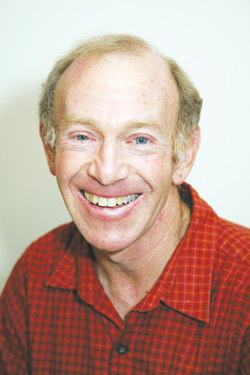



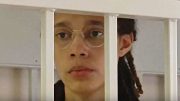
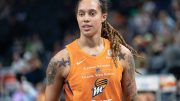
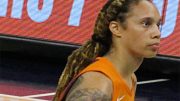
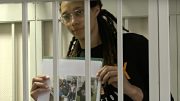
Agreed that ball size probably isn’t going to make much of a dfiference. All high level women basketball players play in men’s games with the men’s ball growing up. It is just too hard for these elite women to find a consistent group of women who can challenge them as compared to finding a men’s game. Also you left out the one reason why she might have a shot at making it: her 7 3 wingspan. That is a truly elite number and will give her a standing reach well in excess of most PFs and probably of a good number of the centers. Personally, I don’t think she will be fast enough to defend male NBA players. But her elite reach is going to help her recover and challenge shots vertically. Maybe it gives her a shot. Another fact is that she came into NCAA at about 175. So she has put on over 30 pounds at this point and one suspects that this is mainly muscle. So she is very strong for a woman (and probably compares nicely in strength to the average man). Still, I’m sure she will give up a lot of strength to NBA players. However, on the flip side, she will also have a lower center of gravity (in this regards her female body works in her favor) than other PFs her height or taller. So she might not get backed down all that easily in summer league play against other players her age. And while there aren’t too many of the tank PFs who play at 6 6 and who might have a lower center of gravity than her, those that try to challenge her by backing her down will eventually have to shoot over those long arms. And let’s not forget that summer league games are filled with beanpole PFs weighing 215 or so. They might not be able to push her around all that easily. Though those types are often super fast and bouncy, so they will probably just go around her.